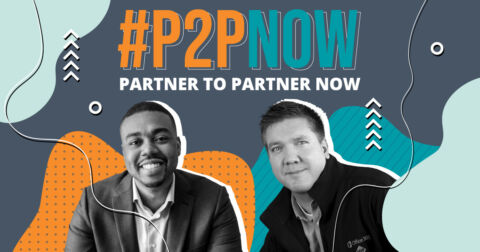One of the most common discussions we have with our partners is on the topic of evaluating the economic opportunity of a partnership. What makes a partnership worth entering into, and when can you tell it’s the right time to hop in?
In this first part of our P2PNow discussion, we’ll go over the three different sides of a partnership opportunity and what partners should expect when seeking customer value. Watch the session below or read on for a full transcript!
Transcription
Christian: Today we’re going to discuss how to evaluate the economic opportunity of a Partnership. This is a big discussion we’re constantly having with partners, so much so that we’ll be doing three episode centered on this theme.
Sam, where should we begin with this topic?
Sam: This is one of the most important activities to do in a partnership that many people either fail to do or don’t do with much diligence.
Christian: It seems a bit funny to say out loud but It makes sense that if you’re not close to the financials of your business that you may not really think about the numbers.
Sam, how would a partner go about doing this evaluation?
Sam: Sure, well to start there are a number of different factors to consider from both angles. Consider the following three sides of a partnership opportunity – increasing customer value, service opportunity, and operational efficiency improvement.
For increasing customer value you need to consider that math on how much you’re going to be able to increase your price because of the additional value this vendor is bringing to your customer.
For service opportunity this is simply the vendor being able to provide you as the opportunity new opportunities to implement their technology.
Operational efficiency is something that’s often viewed as a bonus. However, as we all know time is money. If you can find a vendor that does that same thing as an existing vendor.
However, they make it easy to transition to their platform and they can transact 50% faster then your current technology solution. That’s a good reason to consider switching to them.
Christian: Those seem like really solid foundations to a partnership. Can you make more money, will you be provide service opportunities, and can you do business faster.
Sam: These are the main reasons we’ve seen partners make the transition to working with AvePoint. It’s also the beauty of our industry, because any one of these three factors may be a reason to establish or to leave a partnership. Part of AvePoint’s Partner Program is to ensure we’re constantly improving on all three of these pillars.
Christian: This is great, but I’m sure some of our listeners are really interested on how to actually evaluate on these three factors. Focusing on customer value for today’s episode, how should you as a partner approach doing this math?
Sam: Excellent question. Surprise, surprise, the honest answer is “it depends.” But let me give you an example of how I’ve seen our partners think through this.
When we say increase value we mean “revenue attainment.” So let’s take the MSP perspective since it’s the most repeatable model. Most MSPs have a catalog of solution for their customers. This partnership must add a compelling new offering to your catalog.
If your baseline offering is $100 per user, will adding this new backup or security feature demand an additional $30 per user, for example? The best way to do this is to draft the offering and take it to your top customers. If you get a positive response to the option then it might be worth bringing to market.
Christian: Novel concept, ask a customer if they’d be interested in buying something before committing to integrating it.
Sam: Yes, this is one of those chicken or the egg things. Do you create the offering then try to sell it or do you sell it then create the offering?
There’s a middle option. Develop interest with a small group to gauge the market and then make the investment.
One of the worst things you can do it continue to take calls and meetings with a vendor knowing you have no plans to bring their solution to market. The only thing worse then that is taking the time to actually build out a solution and then not being able to sell it.
Christian: It’s interesting because I can imagine this happens all the time. That’s dozens of hours a year your teams could be spending that doesn’t amount to any revenue.
Sam: Correct, identify the market then build the solution. It ends up better for all partners. After the market it established and the solution is built, the next step is to educate and incentivize your sellers to introduce the offering.
Christian: Ahh that’s an interesting point. It’s just education, there has to be some reason to shift their mindset.
Sam: Absolutely, anyone who has a number is trained to move to that number through the path of least resistance. I’m not going to shift my conversations unless there is an obvious new need met to hit my number faster or unless I get some sort of short term incentive.
Christian: Perfect. I think that pretty well wraps up our first segment for measuring the Economic Opportunity as a Partner. If you have not already done so, be sure to join AvePoint’s Partner Program, which you can find at www.avepoint.com/partners.
Be sure to tune in for the next segment where we discuss the service opportunity side of a partnership, And check out Christian’s “How to Build Your Business” webinar series here!


